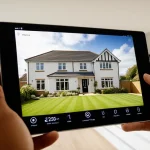Overview of Technology’s Impact on Daily Life in the UK
The influence of technology on everyday life in the UK is profound, affecting how people communicate, work, learn, and even entertain themselves. Recent UK statistics indicate that over 90% of the population uses the internet daily, showcasing the integral role of technology in modern life. Over the past decade, significant technological advancements, such as faster internet speeds and the proliferation of smartphones, have become commonplace.
These advancements have seamlessly woven technology into the fabric of daily life, altering living patterns and interactions. For instance, online banking has become the norm, digital shopping is thriving, and social media platforms are now primary sources for news and relationship building. This transition has effectively reshaped lifestyle choices, with more citizens opting for technology-driven solutions for convenience in tasks ranging from healthcare consultations to online education.
Also to discover : What Are the Key Drivers Behind UK’s Tech Startups?
The integration of technology has not only simplified tasks but also propelled innovation, enhancing efficiency and introducing new possibilities. However, it has also raised concerns regarding privacy, data security, and the growing interdependence on digital solutions. As technology continues to evolve, it will undoubtedly bring further changes to the lifestyle and societal norms in the UK, underscoring its lasting impact.
Communication Changes Driven by Technology
In the past decade, communication technology has revolutionized how people in the UK interact and maintain relationships. One of the most notable changes has been the advent of social media platforms, which have reshaped the way individuals connect on a personal level. Social media allows users to maintain friendships, build new connections, and engage with communities on a global scale, transcending geographical barriers.
Also read : What Innovations Could Transform the UK Technology Landscape?
Instant messaging apps, such as WhatsApp and Facebook Messenger, have further influenced communication dynamics. These platforms offer real-time, fast communication, making it easier for individuals to stay in touch and share information instantly. The convenience of these services encourages more frequent and relaxed exchanges among friends and family.
Beyond personal relationships, online interactions facilitated by technology have bolstered community building and engagement. People are now able to participate in forums, join interest-based groups, and organize events digitally. This level of connectivity fosters a sense of belonging and can lead to increased civic participation, as it provides a platform for discussions on social and political issues, allowing voices to be heard in ways previously unimaginable.
Technology in the Workplace
In recent years, the workplace in the UK has experienced significant changes, especially with the rise of remote work. This shift to flexible working arrangements has been accelerated by technological advancements, allowing employees to work from virtually anywhere. This convenience comes with both benefits and challenges, as remote work offers a newfound freedom for employees to balance professional and personal commitments, enhancing overall work-life balance.
The rise of remote work in the UK
Remote work has become more prevalent due to improved internet infrastructure and the development of sophisticated communication tools. Many businesses have adopted remote policies, recognizing the potential for reduced office costs and increased employee satisfaction. For example, video conferencing platforms and cloud-based applications facilitate seamless collaboration among team members, irrespective of their locations.
Productivity tools and technology integration
Productivity tools are central to maintaining efficiency in this digital-first environment. Applications such as project management software, digital calendars, and time-tracking systems help streamline tasks and keep teams organized. Moreover, these tools provide valuable insights into work patterns, enabling managers to make informed decisions that can drive performance improvements.
Work-life balance considerations in a digital-first environment
As beneficial as technology can be, it also presents challenges. The blurred lines between work and personal life can lead to burnout, with employees finding it difficult to disconnect after hours. Companies are increasingly aware of the need for strategies that promote mental well-being and encourage boundaries between work and home life. Recognizing and addressing these challenges is crucial to fostering a sustainable and healthy work culture in a technologically driven world.
Educational Transformations through Technology
Technology has dramatically reshaped the landscape of education in the UK, introducing significant shifts in EdTech, online learning, and the broader education system. These changes are profoundly influencing how students engage with educational content and the outcomes they achieve.
Rise of Online Learning Platforms
The advent of online learning platforms has revolutionized access to education, offering flexibility and broadening educational opportunities. With a plethora of resources available, students can now access courses from prestigious institutions without geographical constraints. Platforms like these have become essential tools in facilitating continuous learning, especially for remote and non-traditional students.
Blended Learning Environments
Blended learning, which combines traditional classroom experiences with digital components, is becoming increasingly prevalent. This approach allows students to benefit from the advantages of direct interaction with educators while also accessing digital resources and modules. Such environments cater to varied learning styles and can enhance student engagement by offering varied content formats.
Technology’s Role in Personalized Education
Personalized education is being transformed by technology, providing tailored learning experiences based on data-driven insights. Adaptive learning systems analyse student performance and adapt content to suit individual needs, promoting more effective learning outcomes. This customization supports diverse learners, addressing specific challenges and improving overall academic achievement.
However, while the integration of technology into education offers numerous benefits, challenges remain. Access and inclusivity issues persist, with disparities in digital access exacerbating inequities. Addressing these challenges is crucial to ensuring all students can equally benefit from technological advancements in education.
Healthcare Advances and Technology Integration
The integration of health technology in the UK has been a game-changer for both patients and healthcare providers. One prominent development is the rise of telemedicine, which has grown exponentially in recent years. Telemedicine allows patients to access medical consultations and services remotely, eliminating the need for physical visits and enhancing convenience. This is particularly beneficial for those who face mobility challenges or live in remote areas, ensuring that healthcare is more accessible than ever before.
Moreover, technology has revolutionized patient care by improving monitoring and management systems. With the advent of wearable devices and health monitoring apps, patients can track vital signs and share data with healthcare professionals in real time. This continuous flow of information enables timely interventions and more personalized care plans, fostering better patient outcomes.
However, the adoption of health tech is not without its challenges. Issues such as data security and privacy concerns have risen alongside technological advancements, creating a need for stringent regulatory measures and education for both practitioners and patients. Furthermore, there is a learning curve for practitioners who must adapt to new systems and technologies, underscoring the necessity for ongoing training and support. Despite these hurdles, the benefits of health technology continue to outweigh the drawbacks, promising a more efficient and patient-centered healthcare system in the UK.
Entertainment and Leisure in a Tech-Driven Era
Digital entertainment has undergone a transformative journey in the UK, significantly altering consumption habits and the leisure landscape. With the rise of streaming services, households have access to a vast array of content. Services like Netflix and Amazon Prime have revolutionised traditional TV viewing by offering on-demand options, allowing users to curate personalised entertainment experiences.
Trends in Streaming Services
The popularity of streaming services is evident, with platforms providing extensive libraries of movies, series, and documentaries. The convenience and flexibility offered by streaming have led to an increase in binge-watching habits, where viewers consume multiple episodes in one sitting. Digital entertainment is no longer bound by broadcasting schedules, giving users autonomy over when and what they watch.
Evolution of Gaming Culture
The gaming industry has seen a significant shift, with gaming consoles and online platforms like Steam and Xbox Live becoming mainstream. The integration of social features in gaming, such as multiplayer options and live streaming, has fostered vibrant communities. Gaming culture in the UK is thriving, with esports and virtual reality gaining traction and drawing new audiences.
However, these advancements also bring challenges. Balancing screen time with offline activities is crucial to maintaining a healthy lifestyle. It’s essential for individuals and families to find harmony between digital and physical worlds, ensuring that technology enriches rather than overwhelms their leisure time.
The Digital Divide and Its Implications
The digital divide in the UK is a pressing issue, resulting from disparities in access to technology due to socioeconomic factors. Despite the widespread integration of technology in daily life, substantial gaps remain, impacting individuals’ ability to leverage digital advancements. These disparities are often influenced by factors such as income, education, age, and geographical location.
For instance, lower-income households might struggle to afford the latest devices or high-speed internet, while rural areas may have limited broadband infrastructure. This uneven access can exacerbate existing inequalities, marginalising certain demographics and hindering their full participation in a tech-driven society.
The implications of this divide are significant. Individuals lacking access to technology are at a disadvantage in education, employment, and even daily tasks such as online banking. While the internet facilitates broader opportunities, those on the wrong side of the digital divide find themselves excluded from these benefits, perpetuating cycles of poverty and social disparity.
Efforts to bridge the gap include government initiatives and educational programs aimed at increasing digital literacy and infrastructure development in underserved areas. By providing essential resources and training, these efforts strive to empower disadvantaged communities, ensuring that technology acts as an enabler rather than a barrier. Addressing the digital divide is crucial to fostering an equitable society where all individuals can thrive in the modern digital landscape.









